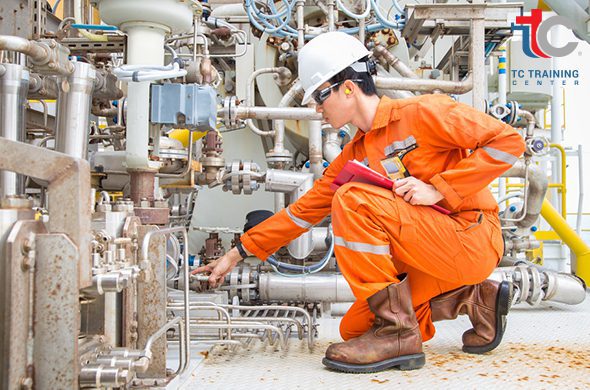Intermediate to Advanced Level Training Course – Pumps, Compressors, Turbines & Troubleshooting
Start time
Finish time
Address
Course price

Course Objectives
Upon the successful completion of this course, each participant will be able to:
- Apply comprehensive knowledge of pumps, compressors & turbines and troubleshoot rotating equipment in a professional manner
- Identify the different types of turbomachinery including basic design aspects and highlighted problem areas
- Minimize compressor work by understanding the processes involved and identifying their efficiency
- Understand the flow through turbomachines and the corresponding velocity triangles including torque and power calculations
- Analyze the different types of centrifugal machines including their design, installation, operation, maintenance, re-rate/retrofit, troubleshooting, and control
- Recognize the various beneficial design aspects of turbomachines and understand the crucial process of cavitation
- Carry out proper methods of device installation, operation, maintenance and troubleshooting
- Understand and apply the powerful methods of Machinery Root Cause Failure Analysis
- Understand the various methods of vibration analysis applied to devise diagnostics
Who Should Attend
This course provides an overview of all significant aspects and considerations of pumps, compressors, and turbines for those who are involved in the design, selection, maintenance or troubleshooting of such equipment. This includes maintenance, reliability, integrity, engineering, production and operations managers, engineers and other technical staff.
SESSION 1: Introduction to Pumps Definitions
- Applications
- Pump Location
- Pump Drives
- Pump History
- Pump Classification
- Advantages and Disadvantages
- Basic Pump Types
- Pumps Classification
- Centrifugal Pumps
- Reciprocating Pumps
- Total Head
- Pumps Selection
SESSION 2: Fluids, Pump Systems and Hydraulic Performance
- Hydraulic Terms / Definitions
- The Pump Curve
- Head & NPSH Problem Solving
- System Head Curve
SESSION 3: Review of Different Pump Types
- Enclosed – Double Suction – Radial Flow Impeller
- Pipeline Pump with Longitudinal Split Casing, Two-Stage.
- Single Suction
- Multi-Stage Horizontally Split Case Pump
- Vertical Turbine Pumps
- Classification and Designation
SESSION 4: Operation, Maintenance and Repair of Centrifugal Pumps
- Centrifugal Pump Startup and Shutdown procedures
- Centrifugal Pump Repair and Overhaul
- Mechanical Condition of Pumps
SESSION 5: Theory of Gas Compression
- Gas laws applied
- Numerical calculations
SESSION 6: Gas Turbines Overview
- Why Gas Turbines
- Gas Turbines Classifications
- Industrial versus Aero-Derivative Gas Turbines
- Gas Turbines Applications
- External Factors Affecting Gas Turbine Performance
- Gas Turbines Cycles
- Fluid Mechanics
- Gas Turbines Standards
SESSION 7: Overview of Steam-Turbines
- History
- Steam Turbine Stage Designs
- Fixed Nozzle
- Rotating Blades
- Steam Turbine Staging Arrangements
- Impulse (Rateau Stage)
- Impulse (Curtis Stage)
- Reaction
- Multi-Staging
SESSION 8: Selection and Sizing of Steam Turbines for Compressor Drives
- Steam Turbine Theory
- Steam Conditions and Their Effect on Turbine Stage Performance
- Numerical calculations of Steam Rate and Efficiency
- Shortcut Method for Turbine Efficiency Determination and Performance Estimates
- Power
SESSION 9: Classification of Steam-Turbines
- Condensing
- Backpressure
- Extraction
- Induction
- Applications
SESSION 10: Compressor Types
- Compressor Selection
- Compression Methods
- Rotary Compressor
- Sliding Vane Compressor
- Dynamic Compressors
- Reciprocating Compressors
- Cooling Systems
SESSION 11: Prediction of Scale Growth Rate in Compressors
- Vibrations Monitoring
- Total Productive Maintenance
SESSION 12: Compressor Operation, Start-up and Shut-down Procedure
- Compressor Operation
- The Axial-Flow Compressor
- Compressor Operations and Performance
- Surge Protection
- Load Sharing
SESSION 13: Compressor Control
- Capacity Control
- Speed Control
- Recycle Loop
- Adjustable Inlet Guide Vanes
- Surge Control
- Automatic Shutdown Systems
SESSION 14: Cooling System
- Intercoolers
- After-coolers
SESSION 15: Lubrication System
- Oil reservoirs
- Oil pumps
- Filters
- Coolers
- Tribology
- Viscosity
- Temperature Effects
- Additives
- Critical Areas of Lubrication
- Factors Affecting Choice of Compressor Oil
- Used Oil Analysis
SESSION 16: Compressor Seals
- Liquid film shaft seals
- Carbon rings
- Labyrinth seal
- Mechanical seal (dry mechanical seal)
- API Flush Plans
- Spiral Groove Sealing
SESSION 17: Compressor Drivers & Couplings
- Steam turbine
- Gas turbine
- Electric motor
- Gear Coupling
- Grid Coupling
- Chain Coupling
- Diaphragm Coupling
- Elastomeric Coupling
- Speed Changers
SESSION 18: Bearing Analysis
- Sliding surface bearings
- Rolling element bearings
- General Requirements for Bearing Materials
- Classification of Bearings with respect to the load
- Cylindrical Bearing
- Tilting Pad Radial Bearing
- Anti-friction bearings
- Ball Bearings
- Bearing Loads
- Ball Thrust Bearing
- Roller Bearings
- Needle Bearings
- Tapered Roller Bearing
- Spherical Roller Bearing
SESSION 19: Materials & Equipment Failure
- Types of corrosion
- Steel
- Cast iron
- Stainless steel
- Nickel alloys
- Hastelloy
- Copper alloys
- Aluminum
- Titanium
- Ceramics
- Plastics
- Rubbers
- Coatings
SESSION 20: A Practical Guide to Root Cause Failure Analysis
- Data Collection & Analysis
- Preventive Maintenance (Time-Based/Dynamic-Based)
- Preventive Maintenance (Lubrication)
- Predictive Maintenance (Condition-Based)
- Condition Monitoring
- Hydraulic Loads, Critical Speed, and Torque




